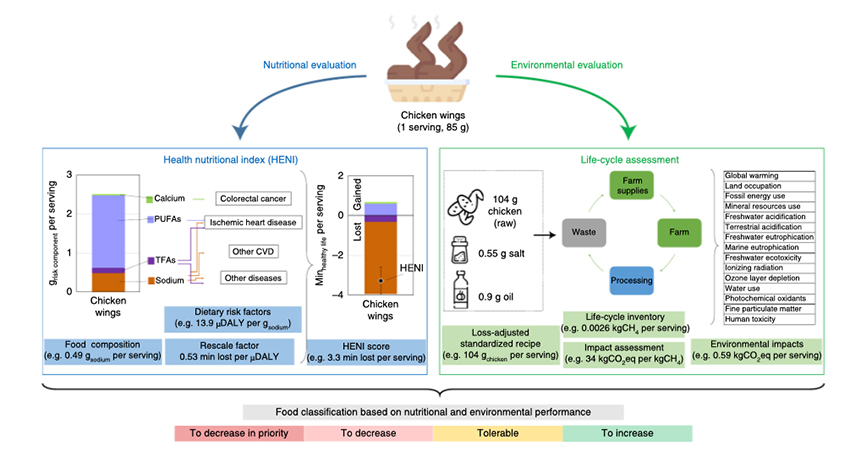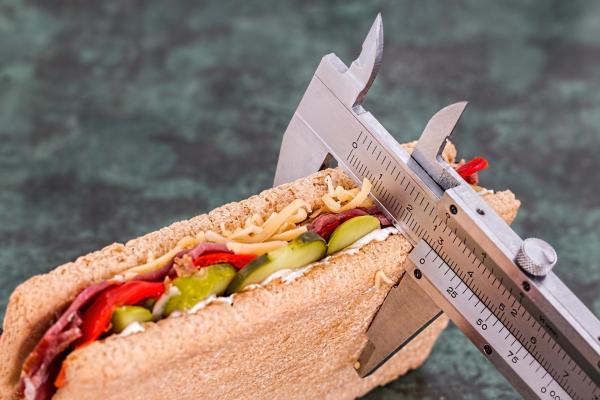As a physician, I was often recruited by the spouse of one of my patients to tell them to stop eating some forbidden delight, like ice cream. Most of the time, the patient and spouse were in their early-to-mid 80s, so I often responded that eating ice cream would probably shorten their life by three or four days, but those were probably going to be bad days anyway, so go ahead. It turns out, according to a new study, I was on the right track, but the amount of time lost was incorrect.
The study is an exercise in mathemagic, but that should not prevent us from viewing nutrition through a new lens. The researchers reviewed the literature on the association of specific nutrients with the likelihood of becoming ill – how much excess sugar, cholesterol, processed foods, or salt is associated with declining health. These dietary risk factors were then mathemagically expressed in terms of the disability-adjusted life years or DALYs – how much good time you might gain or bad time you might lose with a particular disease.
They also combined the nutritional information with studies on how their production impacted the environment – were the nutrients produced sustainably. We needn’t get into the details of the calculations because it involves a great number of approximations and estimates, so it is easily challenged. It was a significant effort, and the researchers should be congratulated. We should take the information in the spirit it was presented, as a new lens for understanding our nutritional choices, and not absolutes but the relative impacts.
The effect of a chicken wing and a hot dog
To understand what the researchers created, let’s begin, as they did, with one of my favorites, the chicken wing. To my mind, there is something about the skin-to-meat ratio that makes a chicken wing special. Here is what the researchers saw through their lens.

Our chicken wing has desirable and less desirable components, healthwise. The calcium and polyunsaturated fats (PUFA) have been associated with improved health, salt and trans-fatty acids (TFA) are felt to be detrimental. To arrive at the balance point of these components, what the researchers term the Health Nutritional Index (HENI), the weight of the component is multiplied by their disease risk factor to yield the μDALY, the minutes of healthy life lost or gained (See, I told you we could skip the math)
Every chicken wing you eat, by their calculation, robs you of 3.3 minutes of healthy life. The great villain here are processed foods and the poster child for that bad boy of nutrition, robbing you of the most “healthy life” – the beef hotdog with bun. It accounts for 36 minutes of lost healthy life! Do not despair; there is another enjoyable food that can almost completely counteract the evil effects of that hotdog. It is – wait for it – the traditional peanut butter and jelly sandwich. All those peanuts, whole grains, and fruit overcome the evil sugars to restore 33 minutes of good health. I know what you’re thinking, eat both a hotdog and a PBJ sandwich, and in the grand scheme of things, they neutralize one another.
A new lens
I could provide other examples and continue to have a bit of fun at the expense of the researchers and this study, but those kinds of substitutions were not at all their conclusions. This lens into our nutritional choices does offer some solid insights.
- There was no significant correlation between the health value we ascribe to these food choices and their serving size or caloric density. A high-calorie food can be healthy, and in some instances, bigger is better.
- Most food categories are neither overly harmful nor helpful
- HENI casts light on the tradeoffs we make in our food choices. Ignore the scientism of calculating the minutes we gain or lose, look at the relations between the foods – from a nutritional point of view, PBJ is “better for you” than a dog on a bun. Nothing in the food label or the USDA MyPlate would give you that information in making choices.
- “HENI translates complex nutritional information into a simple but meaningful score.”
The impact of food production on sustainability
Having re-categorized our food choices' impact on our health, the researchers went on to jostle the standard narrative about the effects of various foods on our environment. Again, it involves mathemagic, in this instance, using studies on the environmental benefit or damage from producing the ingredients in our foods. If you look at the right side of that earlier graphic, you see the environmental impact of the chicken wing.
The researchers categorized environmental factors into three groups, green, amber, and red. As you would expect, green is good, a nutritional win (HENI positive), and with a low environmental impact – a healthy and sustainable diet. The red zone foods have poor, negative HENI scores (alas, the chicken wing is in this category) or with significant environmental effects in terms of CO2. For example, the production of beef stew is equivalent to driving 14 miles in your car. Amber foods are neither too detrimental nor too healthy; they occupy the large space between the extremes. [1] Before dismissing the study, consider these findings, which run against the standard nutritional narrative.
- The correlation “between nutritional and environmental impacts are weak.” What is good for you is not necessarily good for the Earth, and vice versa.
- Sustainability can vary significantly based upon what you measure. “Consumptive water use estimates … show a very different food ranking compared to global warming impacts.” Almonds might be very good for you, and they don’t cause the release of a great deal of CO2, but they are very thirsty – ask any farmer in the drought-stricken Central Valley of California.
- The health effects of what we eat are “on average 1–2 orders of magnitude higher than human health damage generated by environmental impacts.”
- Some plant-based foods are as environmentally unfriendly as animal-based food, and these differences become more apparent when you compare them based on the calories they provide.
A healthy, sustainable diet
“Our findings demonstrate that small, targeted substitutions offer a feasible and powerful strategy to achieve significant health and environmental benefits, without requiring dramatic dietary shifts at once.”
The researchers feel that slight changes in our diet, roughly a 10% isocaloric substitution, can yield beneficial results to our health and the planet [2]. They make some mathematical projections to support those beliefs. They suggest
- “…food replacements should be selected primarily based on nutrition.”
- Reduce those foods with the most significant environmental impact, trading those red zone foods for their amber zone acceptable alternatives.
There remains one tricky problem, water. The benefits from the reduction of greenhouse gases are not experienced in water conservation. Water remains a great challenge. You can read more about this very real problem here.
[1] Green foods include “nuts, fruits, vegetables, legumes, whole grains, and some seafood.” Red foods include processed meat and sugary beverages, “beef, processed meat (mix of beef and pork), pork, lamb, cheese-based foods, and some salmon dishes. …. Most poultry, dairy (milk and yogurt), egg-based foods, cooked grains (for example, rice), and vegetables produced in a greenhouse fall into this intermediate [amber] zone.”
[2] The beneficial effects on the environment do not include those associated with water conservation.
Source: Small targeted dietary changes can yield substantial gains for human and environmental health Nature Food DOI: 10.1038/s43016-021-00343-4




